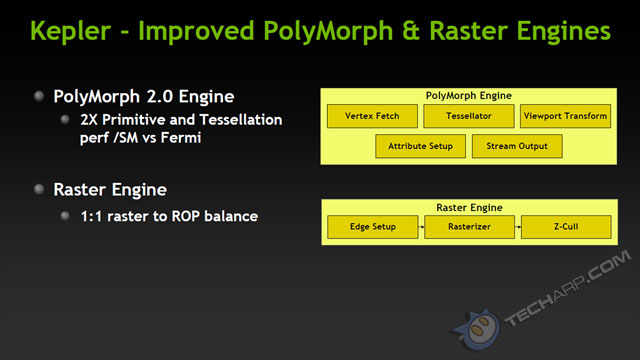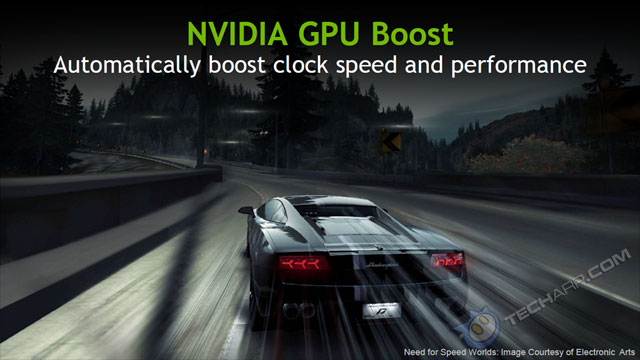The New NVIDIA SMX
If you have read our NVIDIA GeForce GTX 680 Technology Report, you will remember that NVIDIA introduced an enhanced SM unit in the Kepler GPU, which they now call SMX. The difference between the two is significant - NVIDIA reduced the amount of control logic and increased the number of CUDA cores 6-fold to 192. This increases the efficiency (performance per watt) of the Kepler SMX unit to twice that of the SM unit in Fermi.
We also pointed out that the loss of control logic comes at a price - NVIDIA moved some of the scheduling logic to the compiler. This means Kepler pushes some of the work to the compiler and therefore, the CPU. With modern multi-core CPUs so fast and virtually idling in most applications, this extra work shouldn't make much of a difference, and makes a lot of sense for NVIDIA.
There is another reason for this decision though - NVIDIA Ninja Graphics requires this "off-loading" of control logic to work. Like NVIDIA GPU Boost Technology, it is a combination of hardware, software and developer support. Therefore, it will only work on Kepler-based graphics cards like the NVIDIA GeForce GTX 680.
The second hardware key to NVIDIA Ninja Graphics is the new PolyMorph 2.0 engine. NVIDIA boasts that the new PolyMorph engine is twice as fast as the PolyMorph engine in the older Fermi architecture. Well, that is great but again, all that extra performance isn't going to help sell graphics cards to those who are perfectly happy with their current graphics cards. But you will see in a while why the extra performance in processing 3D primitives will come in handy.
The third and final hardware key is the NVIDIA GPU Boost Technology. It will help boost the Kepler-based GPU's performance for Ninja Graphics. This will be critical for games that are graphics-intensive. Although GPU Boost isn't supposed to exceed the target power, there is actually plenty of TDP headroom in Kepler GPUs, so when Ninja Graphics is activated, the target power for GPU Boost will be quietly increased so that the GPU's performance can be further boosted.
The reason why two of the three hardware "keys" to Ninja Graphics is about increasing performance in what is already a very fast graphics card is because Ninja Graphics requires a lot of processing power. It is especially strenuous on the vertex shaders.
Support Tech ARP!
If you like our work, you can help support out work by visiting our sponsors, participate in the Tech ARP Forums, or even donate to our fund. Any help you can render is greatly appreciated!
Page |
Topic |
|
1 |
||
2 |
||
3 |
||
4 |
• Only For FPS |
<<< Introduction, A New Gaming Advantage : Previous Page | Next Page : So What Is Ninja Graphics, Game Support >>>







 Add to Reddit
Add to Reddit



